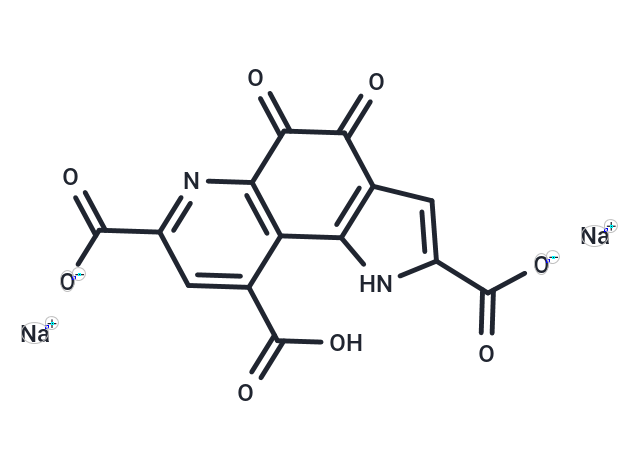Shopping Cart
- Remove All
 Your shopping cart is currently empty
Your shopping cart is currently empty

Pyrroloquinoline quinone disodium salt (Methoxatin disodium salt), an aromatic tricyclic o-quinone, is a redox cofactor for bacterial dehydrogenases. It is an efficient electron transfer catalyst from a number of organic substrates to molecular oxygen (O2), constructing quinoprotein model reactions.

| Pack Size | Price | Availability | Quantity |
|---|---|---|---|
| 10 mg | $50 | In Stock | |
| 50 mg | $140 | In Stock |
| Description | Pyrroloquinoline quinone disodium salt (Methoxatin disodium salt), an aromatic tricyclic o-quinone, is a redox cofactor for bacterial dehydrogenases. It is an efficient electron transfer catalyst from a number of organic substrates to molecular oxygen (O2), constructing quinoprotein model reactions. |
| In vivo | Methoxatin disodium salt has been isolated from guinea-pig neutrophils.?The presence of Methoxatin disodium salt in guinea-pig neutrophils and suggest that it has a possible role, direct or indirect, in the O2.(-)-producing respiratory burst. |
| Alias | Methoxatin disodium salt |
| Molecular Weight | 374.17 |
| Formula | C14H4N2Na2O8 |
| Cas No. | 122628-50-6 |
| Smiles | [Na+].[Na+].OC(=O)c1cc(nc2C(=O)C(=O)c3cc([nH]c3-c12)C([O-])=O)C([O-])=O |
| Relative Density. | no data available |
| Storage | Powder: -20°C for 3 years | In solvent: -80°C for 1 year | Shipping with blue ice. | ||||||||||||||||||||
| Solubility Information | H2O: 5 mg/mL (13.36 mM), Sonication is recommended. | ||||||||||||||||||||
Solution Preparation Table | |||||||||||||||||||||
H2O
| |||||||||||||||||||||

Copyright © 2015-2025 TargetMol Chemicals Inc. All Rights Reserved.